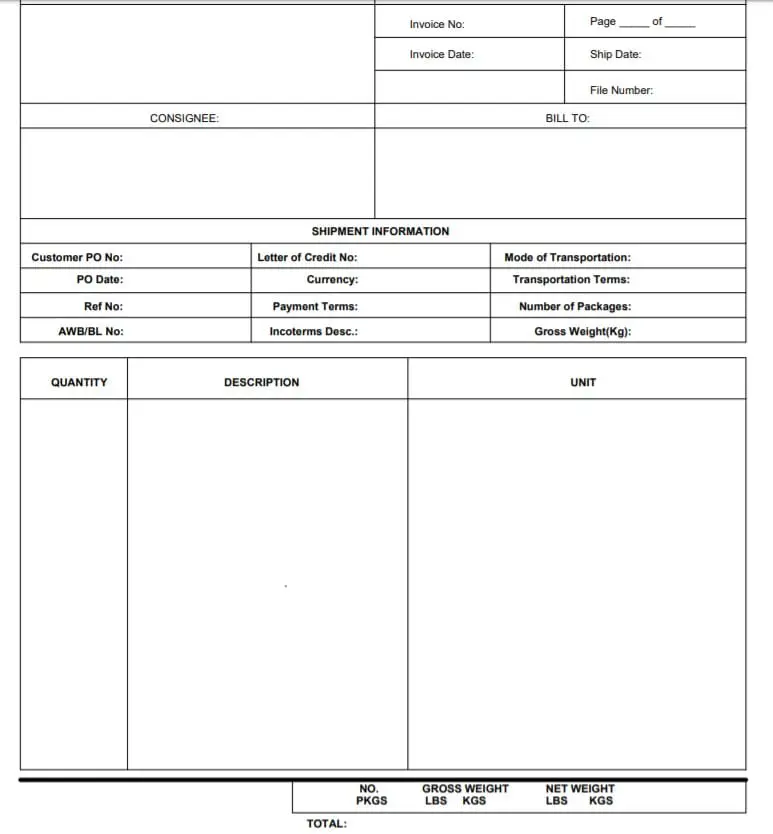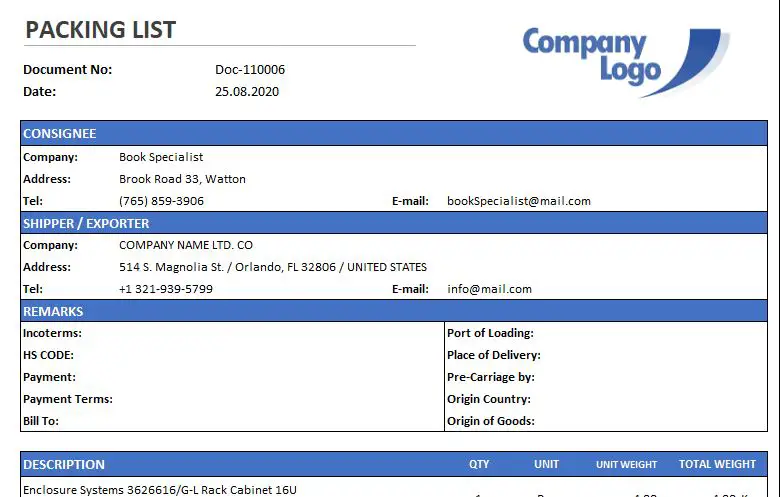What Is A Packing List (PL) in Import and Export ?
A packing list is a shipping document that is widely used in international trade. As its name suggests, it contains information about the contents of the exported goods. It is glued on the exterior of the shipment.
The foreign trade policy of the Government of India requires a commercial invoice-cum-packing list, or a separate invoice and packing list, to accompany all shipments. As a measure to reduce the number of mandatory documents, Indian customs accepts a combined commercial invoice and packing list.
A packing list is generally attached to the shipment in a waterproof pouch.

Contents in the Format for Export Packing List
Let us look at the contents of this all-important list:
- Details of the exporter/consignor of the goods, including their name and complete address.
- Details of the consignee, i.e., the party to whom the consignment is shipped (generally, the overseas buyer). However, in cases where a letter of credit is used, write the name of the bank with the words ‘To the order of…’ If the contents of the shipment are to be resold at the destination to a third party, mention the words ‘To order’. If the actual buyer and the consignee are different, specify their details.
- The invoice number, which is a serial number of the sale transaction, along with the date.
- The purchase order number of the overseas buyer, along with the date. If the shipment is under a letter of credit, mention the LC number and date as well.
- Any other reference number related to the shipment.
- The country of origin is the country where the goods were originally manufactured. This information is especially relevant if goods are imported into a country and exported after repackaging.
- The country of final destination is the country where the goods will finally reach.
- Name of the vessel/flight, along with the voyage number in case of vessels.
- Pre-carriage mode, which refers to the movement of the cargo to the port of loading.
- Place of receipt is the location where the goods are received by the carrier after completing export customs procedures.
- Port of loading can be the same as the place of receipt unless the loading is done somewhere other than the place of customs clearing.
- Port of discharge is the port where the shipped goods are to be unloaded from the carrier for delivery at the buyer’s place.
- Place of delivery will be the same as the port of discharge unless the buyer is located far from the latter. The carrier has to deliver the goods up to this point; this is where the buyer files customs documents for import and takes delivery of the cargo.
- Terms of delivery and terms of payment indicate whether the goods shipped are ex-works, free on board (FOB), C&F, C&I, CIF, DDU, DDP, etc. and terms of payment like LC, DA, DP, etc. as per the agreement between the exporter and the importer.
- For Marking and Numbering, refer to the details made on the on parcels to be exported. Proper marking and labeling are particularly important in case of less than container load (LCL) shipping.
- The number and kind of packages show the total amount and type of cargo. Goods can be in the shape of a wooden box, drums, corrugated carton boxes, pallets, etc.
- Description of goods is self-explanatory; however, if the shipment is under the letter of credit, the description of the goods in the LC should exactly match the words mentioned in the LC.
- Physical information of the shipment; this includes its dimensions, net weight, and gross weight.
- A declaration to the effect that all information given in the packing list is true.
- Any Other Remarks as applicable.
- Finally, the Authorized Signatory, dated and stamped, affixes a stamp of authenticity to the packing list.
Additional Details For Packing List
Considerably more detailed and informative than a standard domestic packing list, an export packing list lists seller, buyer, shipper, invoice number, date of shipment, mode of transport, carrier, and itemizes quantity, description, the type of package, such as a box, crate, drum, or carton, the quantity of packages, total net and gross weight (in kilograms), package marks and dimensions, if appropriate.
Both commercial stationers and freight forwarders carry packing list forms. A packing list may serve as conforming document. It is not a substitute for a commercial invoice.
In addition, U.S. and foreign customs officials may use the packing list to check the cargo so the commercial invoice should reflect the information shown on the packing list.
Check out our instruction to how to write a Commercial invoice, Pro-Forma invoice and Bill of Lading for more details.







